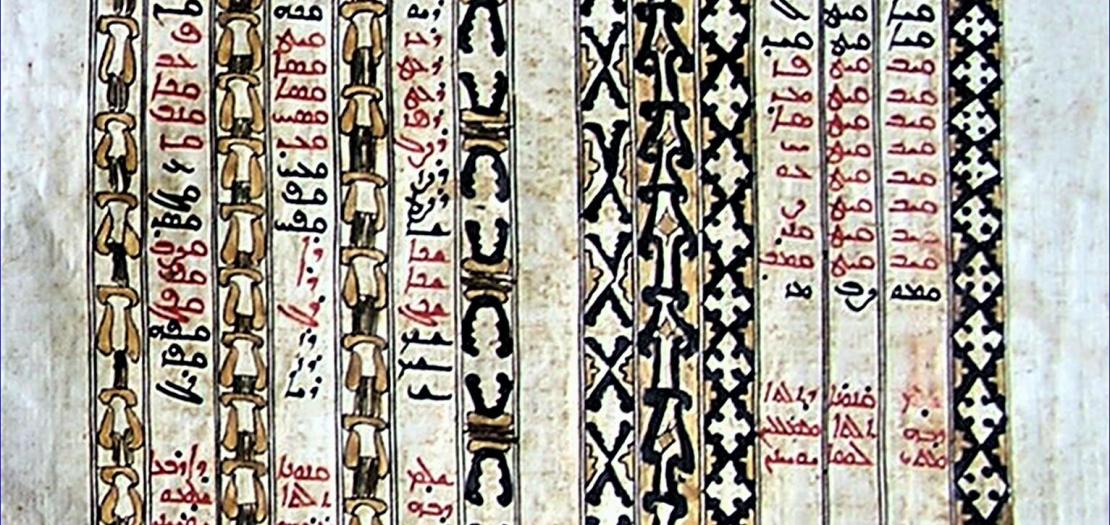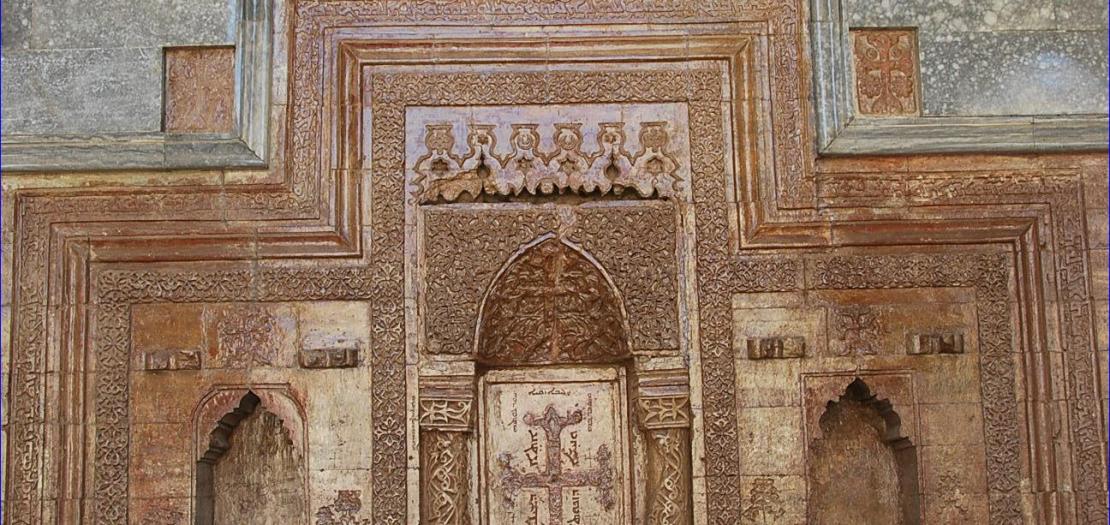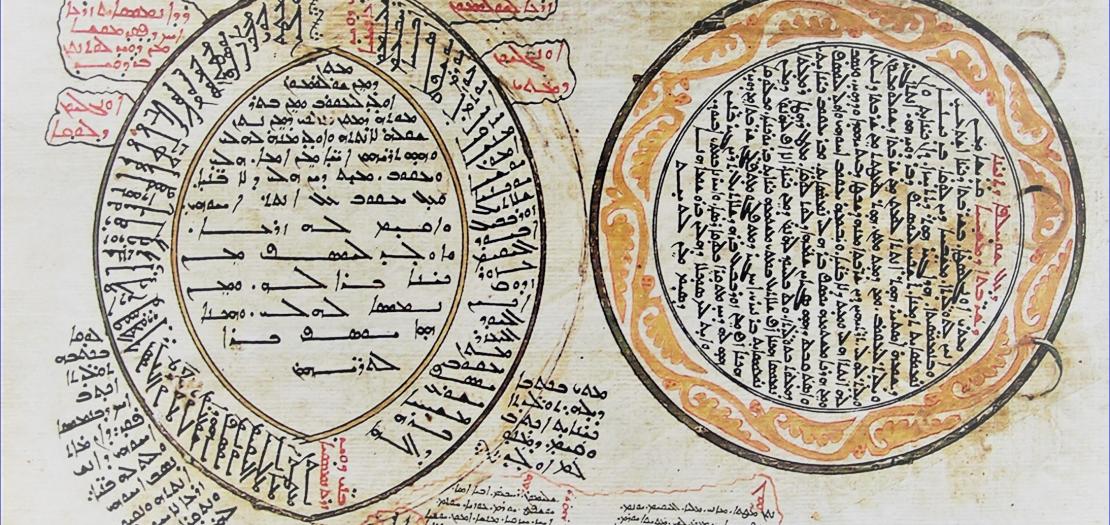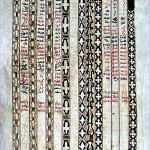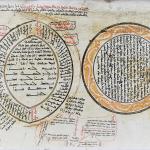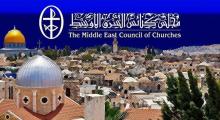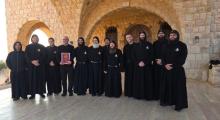Issued by the Catholic Center for Studies and Media - Jordan. Editor-in-chief Fr. Rif'at Bader - موقع أبونا abouna.org
The so-called Islamic State invaded Mosul and the Plain of Nineveh in the north of Iraq in August 2014, destroying people, especially minorities, centuries-old religious and civil buildings, and cultural heritages, including collections of manuscripts owned privately or by institutions. The octagonal martyrion of M?r-Behnam built during the 6th century to commemorate this Christian man martyred at the hands of Zoroastrian Sassanians was dynamited, along with its lapidary art and Syriac, Armenian, Arabic, and Uighur inscriptions. In the nearby monastery which was renovated during the 13th century with the best late Abbasside art, all Christian symbols, along with human and animal sculptures, were defaced.
Over the centuries, the monastery of Mar Behnam amassed various Syriac and Arabic manuscripts, as well as books recording the names of royal and other historically important visitors. During the Islamic State's more than two-year occupation of M?r-Behnam, there was great concern about the fate of these precious documents. The Islamic State is renowned for their fanatical destruction of churches, shrines, and at times even mosques, and so when the Iraqi army liberated the Plain of Nineveh, a surprise came concerning the M?r-Behnam manuscripts.
Yousef Sakat, a young Iraqi priest, who was among those expelled from the monastery by the Islamic State, sensing the danger of an invasion and occupation of the monastery, took the clever decision to hide all the manuscripts. He placed the manuscripts in large tin containers inside a long narrow storeroom, built a wall intersecting the middle, leaving the containers behind, and in the accessible space placed brooms and shovels to eliminate suspicion about the whole space.
Upon the monastery's liberation a few months ago, Father Sakat returned and broke down the wall to find the hidden manuscripts unharmed. Prior to the invasion of the monastery, these manuscripts were digitized by the indefatigable Iraqi Dominican Father Nageeb Michaeel, who founded the Centre Numérique des Manuscrits Orientaux (CNMO), aiming at digitizing all manuscripts in Iraq. The CNMO works in partnership with the Hill Museum & Manuscripts Library, presided by Fr. Columba Steward, OSB, which provides equipment, technical support, financing, but also digital archiving online and placing in the vHMML Reading Room..
The M?r Behnam manuscripts date between the 13th and the 20th centuries, some exhibiting outstanding Syriac calligraphy and very attractive drawings and designs. Syriac, a dialect of Aramaic, is the language of Middle Eastern Christianity with its massive literature dated between the 2nd and the 20th centuries. The manuscripts comprise of bibles, liturgical texts, literary texts, lexicons, themes that fall within traditional areas of Syriac literature. One manuscript is dated "1962 of the Greeks." This accords to the Seleucid dating system corresponding to the year 1651 CE. The manuscript, decorated with geometric designs, contains, among other details, the genealogy of Jesus.
Another manuscript, dated to 1552 CE, is an Arabic dictionary entitled the Ocean, copied with a beautiful Arabic script, a century and a half after the time of its author, the lexicographer Fayruzabadi (1329--1414). The oldest manuscript, dated to 1231 CE, contains acetic writings drawn from the early Coptic fathers. Among the monastery's extensive library are hundreds of printed books dated between the early 18th and 19th centuries. Even these later-period books are very rare in Iraq, given the fact that education regressed in this country under Ottoman rule (15th to early 20th centuries). The registers record the names and comments of the monastery's visitors, including the Governor of Mosul (1917); the Iraqi Kings Faisal I (1923) and 'Ali (1926); and a wandering German soldier, D. Liebold, K.K. 501, who was just thankful to drink "fresh, cool water" at the monastery in 1917!
What is interesting in manuscripts are the colophons, inscriptions added at the end of a book, composed by scribes after completing their copying tasks, sometimes covering the space of several folios. In these colophons the scribes record their genealogy, the names of reigning rulers, and those of administering patriarchs and bishops, in addition to details about current events, political, social, military, and seismic. Such historical details, in most cases local, cannot be found elsewhere, and thus the colophons, collectively, constitute rare sources of information even within obscure periods in which records are usually not attested.
Manuscripts belonging to ethnic and religious communities are tenaciously protected since they reflect their identities: religious and linguistic. The horrible scene of burning Christian Church manuscripts and other books in Mosul by the Islamic State in 2014, was a heavy blow to the Christian heritage of Iraq, and it must not be repeated.
Unfortunately, international laws concerning antiquities are not meant to protect the heritage of minorities as such, but only of that of nations. It is a fact that minorities usually distrust majorities, especially when the distrust is based on religion. The 1970's United Nations Environmental, Scientific and Cultural Organizations Convention considers it illegal to import, export, or transfer ownership of cultural property. Nevertheless, the only way to protect the cultural property of minorities in war-torn or politically unstable regions is to transfer such property to long-term safety, even if outside their countries; otherwise this property is prone to destruction. Although the manuscripts of the Monastery of M?r-Behnam were transferred to a more stable area of Iraq, they still are endangered, and international laws must allow for their transfer outside of Iraq, to secure their survival.


